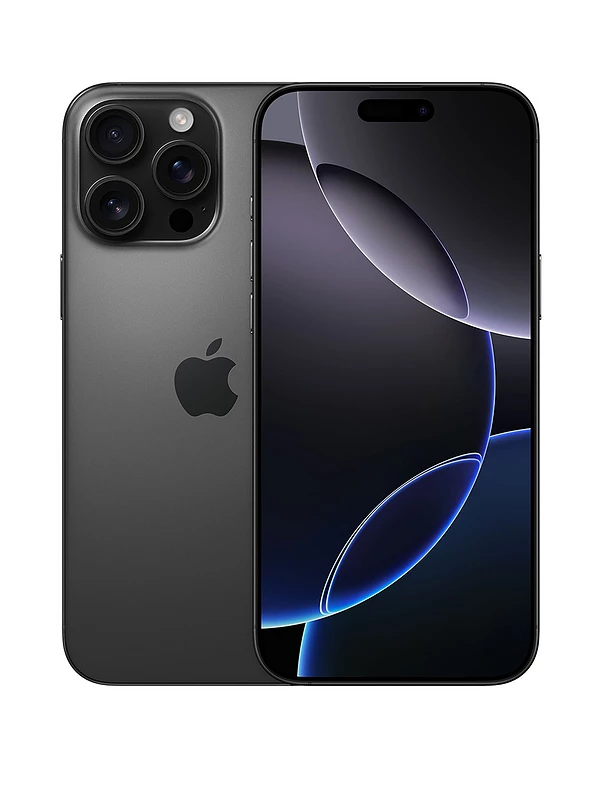In the digital revolution that has swept through our century, blockchain technology stands as one of the most groundbreaking inventions. It promises decentralization, transparency, and a fundamental shift in how we store and exchange value. Yet, for all its power and potential, blockchain remains invisible to most people—until they interact with it through a blockchain wallet. This unassuming tool, often misunderstood or underestimated, is the vital key to unlocking the vast and complex universe of digital assets.
A blockchain wallet is much more than a digital purse. It is your personal portal to an economy that operates independently of governments, banks, and traditional institutions. It allows you to send, receive, and manage cryptocurrencies, yes—but also to access decentralized applications, engage in global finance, and even own pieces of digital art. In essence, it puts you in direct control of your financial future, without intermediaries.
Redefining Ownership in the Digital Age
To understand the significance of blockchain wallets, it helps to examine the concept of ownership. In the traditional world, ownership is mediated by institutions. You “own” your house because it’s recorded in a government registry. Your money is stored in a bank, your identity verified by passports or ID cards issued by authorities. But with blockchain technology, ownership takes a radical turn.
A blockchain wallet proves ownership cryptographically. That is, if you possess the private key associated with a digital asset on the blockchain, you are considered its rightful owner—no notary, registry, or authority needed. This shift from institutional trust to cryptographic proof is revolutionary. It means you can own and transfer assets anywhere in the world, at any time, without needing permission or approval from a centralized entity.
A Deep Dive into the Technology Behind Wallets
At the heart of every blockchain wallet are two components: a private key and a public key. These cryptographic keys are generated together, forming a unique pair. The public key acts as your wallet’s “address”—a long alphanumeric string that anyone can use to send you cryptocurrency. Think of it as your digital mailbox.
The private key, on the other hand, is the master key. It allows you to access your funds and sign transactions. This key must remain secret; whoever holds it controls the assets. Blockchain wallets use these keys to perform transactions securely. When you send crypto, your wallet signs the transaction with your private key, broadcasting it to the blockchain where nodes verify its validity. Once approved, the transaction is permanently recorded, and your balance is updated.
This cryptographic structure ensures not only security but also transparency. Every transaction is visible on the blockchain, yet only those with the private key can control the assets. It’s a balance between openness and privacy that defines the very essence of decentralized finance.
The Birth of Wallets in the Blockchain Ecosystem
In the early days of Bitcoin, wallets were simple tools built by developers, often used through command-line interfaces. They required manual entry of addresses and offered little in the way of user experience. Back then, users were pioneers, willing to navigate complex systems for the promise of financial autonomy.
But as blockchain technology gained traction, demand for more accessible and secure wallets grew. User-friendly interfaces, backup options, QR codes, mobile apps, and eventually hardware devices emerged. What started as a raw tool for developers has now become an essential product for millions of users around the world.
Modern blockchain wallets offer sleek interfaces, real-time price tracking, portfolio management, and even integration with decentralized apps (DApps). The wallet has evolved from a niche utility to a full-fledged platform—one that empowers everyday users to participate in the decentralized web.
Custodial vs. Non-Custodial: Who Holds the Keys?
One of the most critical distinctions in the world of blockchain wallets is between custodial and non-custodial models. This distinction shapes who controls the private keys—and by extension, who truly owns the assets.
A custodial wallet is managed by a third-party service, often a crypto exchange. When you use a custodial wallet, you trust the service provider to store your private keys securely. This setup resembles traditional banking: it offers convenience, account recovery options, and sometimes even customer support. However, it also introduces a layer of trust. If the provider is compromised, goes bankrupt, or is subject to government intervention, your funds could be at risk.
Non-custodial wallets, by contrast, give you complete control. You manage your own private keys and are solely responsible for their security. This model aligns with the decentralized ethos of blockchain: you are your own bank. While it offers unparalleled autonomy, it also demands vigilance. Lose your keys or recovery phrase, and no one can help you retrieve your assets.
The Rise of Hot and Cold Wallets
Blockchain wallets also differ in how they connect to the internet—and this distinction has significant implications for security. Hot wallets are always connected to the internet. They are software-based, run on mobile phones, desktop computers, or browsers, and are ideal for frequent transactions. Think of them as checking accounts: convenient but not ideal for long-term storage.
Cold wallets, on the other hand, are offline. They include hardware wallets and paper wallets, and they store private keys in environments disconnected from the web. These wallets are immune to online threats like hacking and phishing, making them the gold standard for storing large amounts of crypto safely. However, they require more effort to use, especially when signing transactions.
Savvy users often combine the two. They use hot wallets for daily transactions and cold wallets for long-term storage. This hybrid approach balances security with usability, ensuring that users can both engage actively with the crypto world and protect their holdings.
Seed Phrases and the Power of Recovery
One of the most misunderstood but vital features of blockchain wallets is the seed phrase, also known as the recovery phrase. This is a series of 12 to 24 randomly generated words that act as a backup for your private keys. If you lose access to your wallet—whether your phone breaks, your app is deleted, or your hardware wallet is lost—you can restore everything using the seed phrase.
This mechanism is ingenious and powerful. It means you can travel the world without carrying any device and still access your funds from any compatible wallet, simply by entering your seed phrase. But it also introduces a serious security risk. If someone else obtains your seed phrase, they can steal your assets. That’s why experts recommend storing seed phrases offline, preferably in a secure physical location like a safe.
For many, seed phrases symbolize the double-edged nature of decentralization. You have complete control—but also complete responsibility.
Expanding Use Cases: Wallets in the Age of DeFi and NFTs
As blockchain technology has evolved, so too has the functionality of blockchain wallets. Today’s wallets are more than just transaction tools; they’re gateways to a new internet.
With the rise of decentralized finance (DeFi), wallets have become the interface through which users lend, borrow, trade, and earn interest on digital assets—all without a bank. DeFi protocols integrate directly with wallets, allowing users to interact with smart contracts in real time. A simple wallet app now functions like a full-service financial institution, minus the middlemen.
The explosion of NFTs (non-fungible tokens) has added another layer. Wallets can now hold unique digital assets: art, music, collectibles, gaming items, and more. Through platforms like MetaMask or Trust Wallet, users can buy NFTs, display their collections, or even list them for sale—all from within the wallet.
In short, blockchain wallets are becoming multi-functional portals. They are identity verifiers, investment tools, gaming consoles, and art galleries, all rolled into one. The lines between finance, entertainment, and identity are blurring, and the blockchain wallet sits at the center of this convergence.
Mobile, Desktop, Web, and Hardware: Picking the Right Wallet
Choosing the right blockchain wallet depends on your needs, your risk tolerance, and your level of experience. Mobile wallets are ideal for on-the-go users and small transactions. They offer convenience and features like biometric login or QR code scanning, making crypto feel as easy as Venmo or PayPal.
Desktop wallets provide more control and often come with advanced features for developers or serious traders. They work well for those who operate in a secure, personal computing environment.
Web wallets—often browser extensions—are incredibly versatile, especially for interacting with DApps and DeFi platforms. However, they are also more vulnerable to phishing attacks and malware, so security measures are critical.
For those prioritizing safety, hardware wallets are the go-to solution. These physical devices store your private keys offline and require physical confirmation to sign transactions. They are considered the gold standard for security, though they can be less convenient for daily use.
Each wallet type has its place, and many users find themselves using more than one to balance convenience, functionality, and security.
Privacy, Anonymity, and the Myth of Complete Obscurity
Blockchain transactions are often described as anonymous, but this is a half-truth. Most blockchains, like Bitcoin and Ethereum, are pseudonymous. That means while your name isn’t attached to your wallet, every transaction made from that wallet is visible on the public ledger. If someone links your identity to your wallet address, your financial history becomes fully transparent.
This reality has led to growing interest in privacy-focused wallets and coins. Some wallets now offer features like coin mixing, stealth addresses, or integration with privacy blockchains like Monero and Zcash. Others enable connections through Tor networks or offer decentralized identifiers to help protect user privacy.
Still, total anonymity remains elusive. Blockchain’s core feature—its transparency—is both a strength and a privacy challenge. The key is for users to understand the risks and take appropriate measures if privacy is a concern.
Challenges, Risks, and the Road Ahead
Blockchain wallets offer immense power, but they come with challenges. Security remains a critical issue. Hacks, phishing attacks, and scams are rampant, particularly for those who lack technical knowledge. Even something as simple as downloading a fake wallet app can result in catastrophic losses.
Usability is another hurdle. While wallets have become more user-friendly, the concepts behind them—private keys, seed phrases, gas fees—can still be intimidating for newcomers. The learning curve is steep, and the consequences of mistakes are severe.
Regulation poses yet another dimension. Governments around the world are grappling with how to regulate wallets, particularly custodial ones. Issues of identity verification, taxation, and compliance are creating friction between blockchain’s decentralized ethos and traditional legal frameworks.
Despite these challenges, innovation continues. Wallet developers are experimenting with social recovery systems, biometric security, multi-device syncing, and seamless onboarding experiences. The goal is to make wallets as intuitive and foolproof as possible—without sacrificing the principles of decentralization and control.
The Wallet as a Metaphor for the Future
As blockchain technology matures, the wallet is poised to become far more than a tool for holding money. It will become your identity on the decentralized web—a secure, personal hub that holds not just your finances, but your credentials, your memberships, your medical records, and more.
Imagine logging into services without passwords, using your wallet to prove who you are. Imagine managing your health records securely, voting in decentralized governance systems, or proving ownership of real-world assets like property or vehicles—all through your blockchain wallet.
This vision is already beginning to take shape. The rise of decentralized identity (DID), verifiable credentials, and cross-chain interoperability points to a future where your wallet becomes the centerpiece of your digital life.






